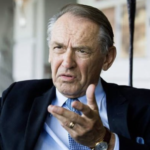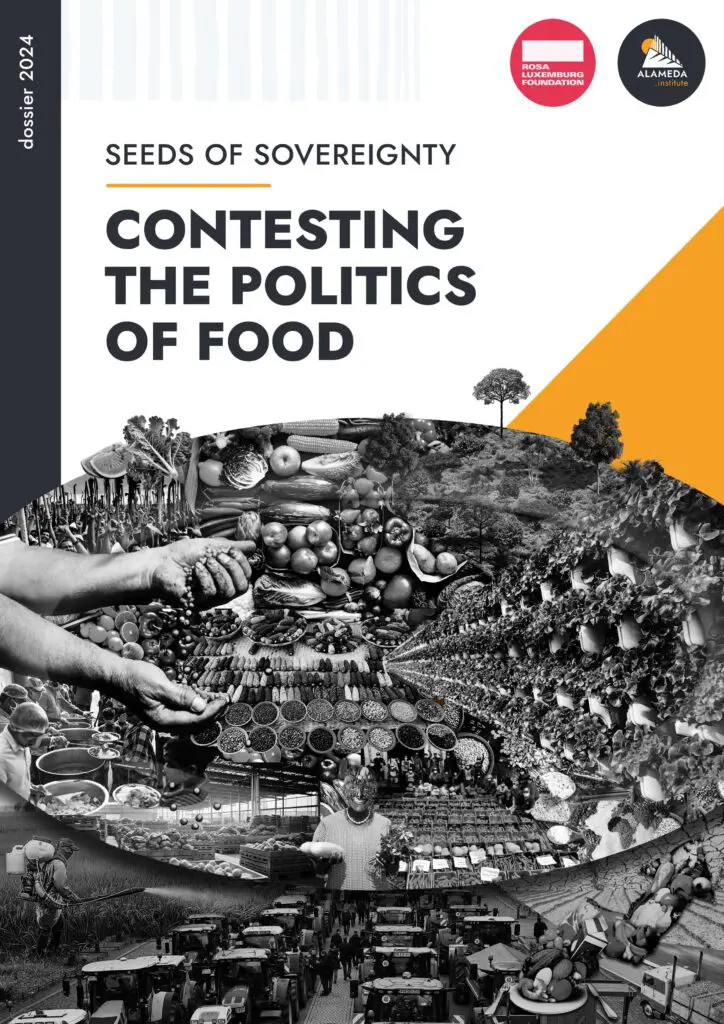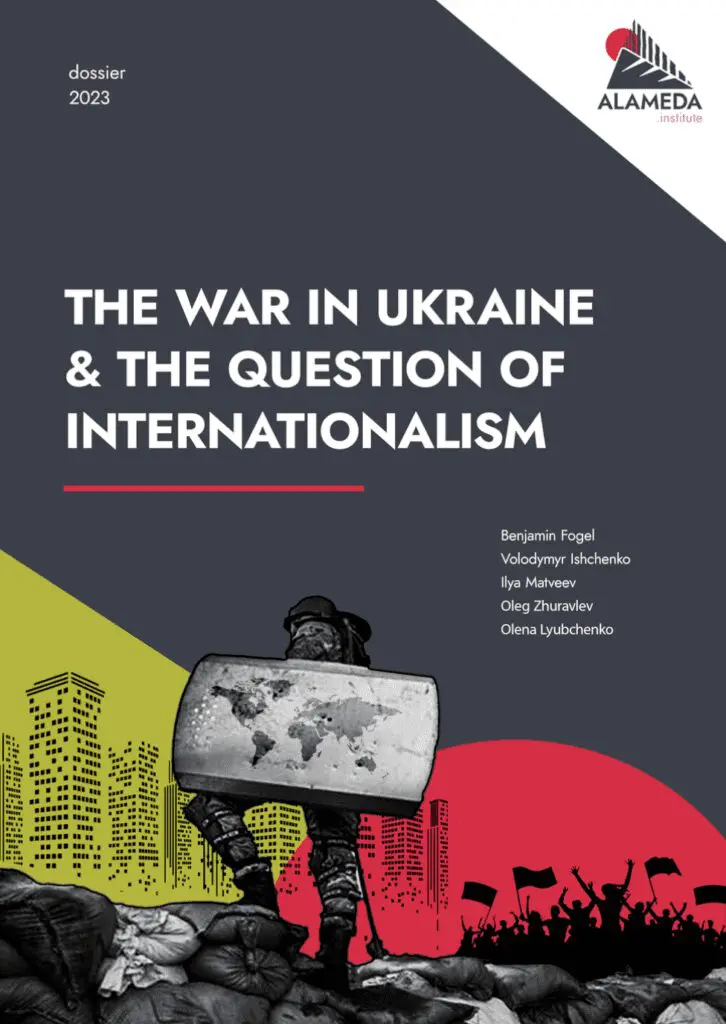Negotiating the ‘Magna Carta of humanitarian action’: Interview with Jan Eliasson
The cornerstone of formal humanitarian reform in the 1990s was a resolution of the United Nations General Assembly known as 46/182. Frequently referred to in accounts of a consolidating humanitarian ‘system’ and often cited as the first moment of reform in the evolution of the contemporary sector, 46/182 created the Department of Humanitarian Affairs, the precursor of the Office for the Coordination of Humanitarian Affairs; it also established the position of Emergency Relief Coordinator, the Inter-Agency Standing Committee, and new mechanisms for emergency appeals and funding. For Michael Barnett, author of the influential Empire of Humanity: A History of Humanitarianism, the resolution reflected – but also furthered – the integration of humanitarian action into global power politics: As the world became fonder of humanitarianism, it became too important to be left to the initiatives of loosely networked nongovernmental organizations and had to be centralized’.
The context for the reforms of resolution 46/182 was marked by instability, both on a geopolitical level with the easing of the Cold War and regarding the more limited, and immediate, question of disaster response. Dissatisfaction with the UN’s existing disaster response mechanisms had been expressed almost since the time of their creation in the early 1970s. In the 1980s, these ongoing reforms briefly became entangled in more expansive agendas; they were also renewed following the 1988 earthquake in Soviet Armenia, which triggered the creation of additional mechanisms for emergency relief. In the years that followed, international cooperation would increase as the superpower rivalry eased, leading to a period of heightened ‘humanitarian’ politics, from the rapid growth in relief funding to the multiplication of peacekeeping deployments, the rise of Western military interventionism, and attempts by humanitarian organisations to self-regulate their way through the resulting ethical minefields. These developments were on the horizon when Resolution 46/182 was passed on 19 December 1991, one week before the dissolution of the Soviet Union.
The task of shepherding negotiations fell to Swedish diplomat and politician Jan Eliasson, who also became the first Emergency Relief Coordinator from 1992-1994. Prior to that post Eliasson had been Sweden’s Permanent Representative to the UN (1988-1992); he subsequently held many significant positions within the UN and in his home country, serving as President of the UN General Assembly’s sixtieth session (2005-2006), Swedish Foreign Affairs Minister (2006), and Deputy Secretary-General of the United Nations (2012-2016), among other positions. This interview with Eliasson on his role in humanitarian reform has been edited for length and clarity.
Entering international service
I was raised in the Swedish foreign policy tradition, where international cooperation, multilateralism, was a natural inclination. I served with the legendary Prime Minister Olaf Palme, who was a bit of an activist, particularly on conflicts like Vietnam and Afghanistan. We also had a tradition in Sweden of believing strongly in the United Nations. A well-known Secretary-General was Dag Hammarskjöld, who was the second Secretary-General, a legendary diplomat, and very much respected in my country. He died in an air crash in 1961, which was traumatic in Sweden. He was a person to follow in diplomacy – I had his picture in the drawer of my writing table at the Foreign Ministry. Dag Hammarskjöld was a person who helped to create the ethos around the United Nations. He believed extremely strongly in the UN Charter. And I was known by some in the UN for always carrying the Charter with me, in my pocket, during my years as both Under-Secretary-General and Emergency Relief Coordinator in the 1990s, but also later on, as President of the General Assembly and then as Deputy Secretary-General. So, it was a pretty well-worn Charter in my pocket!
To bring the conversation to issues of humanitarian action, I was Sweden’s Ambassador to the UN in the late 1980s – I came to New York in the spring-summer of 1988. And at that time, we in Europe, in particular, felt that the Cold War was disappearing or going to disappear. Mikhail Gorbachev was in power in the Soviet Union and there were high hopes for ending the Cold War and the debilitating period of nuclear stand-off and other fears of the ʼ70s and ʼ80s.
The UN Charter starts with three words: ‘We the peoples’. What we felt as ambassadors in New York – a particular group of good friends – was that the Cold War implied that nations were pawns on a geopolitical chessboard, while in fact the whole intention of the UN was to put the human beings, the people, ‘we the peoples’, in the centre. And what we could contribute was to bring the dimension of human rights and humanitarian action more strongly into the United Nations at the end of the Cold War.
We had these discussions in 1988 and ʼ89 and ʼ90. And I was then elected the Vice President of ECOSOC, the Economic and Social Council, and we agreed that this would be an extremely good platform to propose a text that could form the basis of a resolution of the UN General Assembly giving a mandate for humanitarian action – and even creating, as we believed and which later became the case, a Department of Humanitarian Affairs equal to the Department of Peacekeeping Operations, Department of Political Affairs, and so forth.
Man-made disasters
I was chosen to be the frontman of this venture, and the first step was to go to Geneva in the summer of 1991, where we negotiated a paper. It was a rather modest paper, let’s say four or five pages – sort of an idea, notion, an outline of elements for a solution. But it required negotiation, and that’s when you discovered the sensitive points of bringing in the humanitarian dimension at the United Nations, which was very strongly security-oriented, and very much oriented on the basis of sovereignty and territorial integrity, which are basic principles for the UN.
At that time there was a rather activist French secrétaire d’État for humanitarian action, Bernard Kouchner, formerly of Médecins Sans Frontières, who brought up the notion of ingérence humanitaire or humanitarian intervention. That was a bit of a disturbing element in the negotiations because many of the developing countries felt, after colonialism, that to give the ‘Western powers’ an instrument through which to bring up issues, which for some were clearly internal affairs, was not acceptable. I had to bring the discussions back to what we had in the past – genocide, during the Second World War and what had happened in Cambodia; Rwanda was yet to come.
It was imperative to be able to not only act very resolutely in the cases of natural disasters, which occurred regularly – earthquakes, floods, and so forth – but also in man-made disasters: We foresaw their growth in number and scale with the end of the Cold War. When the ‘wet blanket’ of the Cold War disappeared, you would have other forces emerging – economic, social, environmental, internal forces that would explode inside countries. We foresaw a period of civil wars in the ʼ90s, which later happened in the Balkans and Africa particularly. We had to build this acceptance of action for humanitarian reasons. Action on man-made disasters was particularly difficult, because delegates felt this could be a matter of internal sensitivity in many nations.
I was helped not only by Western powers – the European Community was very strongly in favour of this, and my Nordic neighbours were extremely in favour also – but also, surprisingly, I had a reluctant ‘yes’ from Sergey Lavrov, who was then the Head of UN Affairs and Deputy Foreign Minister of the Soviet Union. We met and took a walk and hit it off in a personal way, and then he said: ‘Okay, I will not obstruct this. I think you’re onto something’. And that was very important because it meant that we didn’t have that East/West division. I then came back to New York as Ambassador with this paper in my hand. I showed it to the President of the General Assembly, Samir Shihabi from Saudi Arabia, and he set up an open working group, outside the traditional fora in the General Assembly. My aim was to finish this off by the end of 1991. He agreed. We started only in October 1991. Then we had two months of extremely intense negotiations.
I had two people assisting me from the Secretariat: Shaukat Fareed, the Pakistani diplomat, and then also Edward Tsui, who was sort of a walking encyclopaedia on drafting, and on my intentions because he and I had talked very closely. We kept going at a very hard pace. In the beginning there were perhaps seventy, eighty people in the room. I didn’t want to exclude anyone, anybody could come. And then later on when the details were coming up for negotiation, it went down to maybe forty or fifty people. And then we had a real battle of the text.
Insisting on principles
I am still very proud that my younger colleagues call this resolution ‘the Magna Carta of humanitarian action’. I remember the discussions – on the sovereignty issues, humanitarian intervention, on the Inter-Agency Standing Committee, on consolidated appeals.
The technique that I used in the negotiations was to talk first about principles. It’s something I’ve learned myself during my years as diplomat, that if you start discussing basic things first – principles that should guide you – you greatly improve the possibility of getting the resolution through. Because during that discussion of principles you more or less touch upon all the trouble-points that you may have later on. If you go by some type of technical agenda, it won’t work. If you start with logistics or ‘Inter-Agency Standing Committee’, you put bureaucracy before principles. But people were very impatient because I kept going on the principles, particularly the sovereignty issues and the humanitarian intervention issues. I really got into it, I wanted to have everybody on board on that, and in the end I was criticised. Because we had no text ready even at the beginning of December. I was stuck, they said, on principles. But I knew I was on the right track, so when we had agreed, finally, all those preamble texts and the principles involved, then it was an easy ride – not an easy ride, but that was just text production.
The General Assembly ended on 19 December 1991. And believe it or not, I was working into the night between 17 and 18 December. We were in the meeting in the afternoon, and we got stuck on three or four points, but I said, ‘I won’t let them leave the room’. So, we stayed in the room! I said: ‘We have to continue. We have the last day of the Assembly on Friday, and if we miss this opportunity you will have another chair, you will have another President of the General Assembly, and we will have to start from scratch again next year. Is that what you want?’ And then in the end they stayed – everybody stayed.
We ended at 5pm and then I said, ‘Go and get yourself something to eat. Come back at seven and we’ll continue’. We had another break at 11pm. There was a Chinese restaurant nearby. And to lighten up things I remember I asked everybody to bring back their fortune cookies. I said: ‘Don’t break your fortune cookies! Come with them to the meeting’. We started by reading the text of the fortune cookies at 11pm. This helped lift the tensions! People laughed, and we created quite an atmosphere. But still we got stuck again. At 1 AM, or maybe 1.30, I gave the final text. There were three or four very important points, and I said: ‘This is it. Are we going to go for it or not? We can’t go on until five o’clock in the morning because we’ve got to do the texts for tomorrow’. And then they came back.
The two key groups were the European group and the G77, the group of developing countries – at that time there were around 127 nations represented in that G77 name. The key nation in that group, the ideologically inclined delegation, was India. And they came back, representatives of both groups, at 1.30. It was a bit of theatre. Silence in the room. They both announced with drama their acceptance of the text. And then applause broke out and people were embracing each other and thanking each other.
The next day we had the text printed out and brought to the General Assembly vote. The only thing that was disturbing was that there was a leak to the media. If you get The New York Times of 18 December, you will see this article portraying the resolution as a victory for humanitarian intervention.1Paul Lewis, ‘U.N. to centralize its relief efforts’, The New York Times, 18 December 1991. See also Paul Lewis, ‘Disaster Relief Proposal Worries Third World’, The New York Times, 13 November 1991. I was furious. Furious! Ghana was the chair of the G77 and fortunately the lead was a wonderful person, Kofi Awoonor. So I called him: ‘Listen, this is a sabotage. You know this. We have talked this through, the many weeks of principles, and you heard my position. You’ve got to convince your friends that this is not what it is’. He called the seven or eight most important Non-Aligned countries or G77 countries. They were also furious. In their declarations of acceptance of the resolution they made very clear that it was not an acceptance of humanitarian intervention.
So, the resolution was adopted, and I breathed a big sigh of relief, until Secretary-General Boutros Ghali called me and asked whether I wanted to head the department that was about to be established. I didn’t know that I had written my own job description during that period! I hesitated. But I was intrigued by this, and I wanted to carry out what I had worked on and thought about ever since that discussion on moving from the pawns of the chess game to human compassion and passion for action. So I accepted.
Personal, political, institutional
When you move in this direction – of establishing a mandate which more directly affects human beings, lives – you automatically get yourself more involved. It was intended to make the UN closer to the ground. And ‘the ground’ was enormous suffering, poverty – starvation, even, in Somalia and Sudan where I went with my earlier missions; it was refugee movements and displaced people in Myanmar, where I conducted the first negotiation on the situation of the Rohingyas. It was natural disasters all over the world.
Later, as President of the General Assembly, I negotiated the establishment of the Human Rights Council, and when I was Deputy Secretary-General of the UN I brought out the ‘human rights up front’ initiative, which was meant to put human rights violations on the agenda for the Security Council as a reason for prevention – that they should see human rights violations as signs of upcoming crisis. I was probably ahead of the times, because it wasn’t carried on after I left the UN.
I remember once we were eight Under-Secretaries-General at the table and the issue of landmines came up. Landmines hadn’t been seen as such a ‘humanitarian’ problem earlier on – later there was the Ottawa agreement and so forth. But it came up around that table and I said: ‘I’m willing to take it on. I need a couple of people to work on it and then I will have to talk with the agencies, but I think I’m going to do it’. Then, believe it or not, one of the other USGs said, ‘No, you can’t do that’. Why not? ‘There is no mandate to work with landmines’. And I said: ‘Are you crazy? The landmines are out there in the ground and tearing off the legs of farmers while we talk, and you tell me that we can’t do it because we don’t have a mandate? We will have a mandate if I go and speak to my former colleagues about it, if you need resolution for it. But I think it’s so obvious that we need to do it, so we can do it simply under the humanitarian mandate’. It shows the level of UN bureaucracy.
All this to say that I have been driven, some of the time, by the idea that we should get closer to being meaningful to human beings, even if I don’t think I’ve used that terminology before. And it adds an emotional quality to the work. It is an enormously satisfying feeling, if you feel that you have negotiated the return of five thousand refugees, or opened up a humanitarian corridor, as I did in Sudan in 1993. Your heart cannot fill the space of your chest, it’s so big. And you see it in other people, also. Then you also get more upset if they don’t listen to you!
Maybe my passion for human rights was created during my time as humanitarian chief: It’s a thin line between human rights and atrocities, and humanitarian action and humanitarian needs. The frustration of a humanitarian actor is usually that we work with the symptoms and not with the causes. That is a very, very frustrating situation in which to find yourself. To be in the situation of the emergency room doctor and see unnecessary deaths, you say, ‘What the hell is going on?’
Refusing to acknowledge the causes does not help. But we must also preserve space for humanitarian action. We need to keep two perspectives alive at the same time: One is the stark realities on the ground. The other is the world as it should be. Our job is to reduce the gap between the two.
NOTAS DE RODAPÉ
- 1Paul Lewis, ‘U.N. to centralize its relief efforts’, The New York Times, 18 December 1991. See also Paul Lewis, ‘Disaster Relief Proposal Worries Third World’, The New York Times, 13 November 1991.

ARTIGOS RELACIONADOS
A Lawless Trump Administration Runs Amok in the Caribbean
A post-social question
The Politics of Normality in Wartime Russia and Ukraine
On the Limits of Humanitarianism
The Humanitarian Machine: Waste Management in Imperial Wars
Discord by design: The deliberate precarity of Syrian labourers in Lebanon
Displacements
Recuperando a soberania digital: Um roteiro para construir um ecossistema digital para as pessoas e o planeta
Partido Labour, ajuda externa e o fim da ilusão
Ecocide: Exploring the Roots and Current Applications of the Concept
The Peasant’s Arrested Revolution
Western Humanitarianism: Saving Lives or Regulating Death?
Non-Aligned approaches to humanitarianism? Yugoslav interventions in the international Red Cross movement in the 1970s
I. Introduction: Containing politics dossier
III. Energia e democracia ecossocial contra o gattopardismo fóssil
I. Descarbonizar não é suficiente




